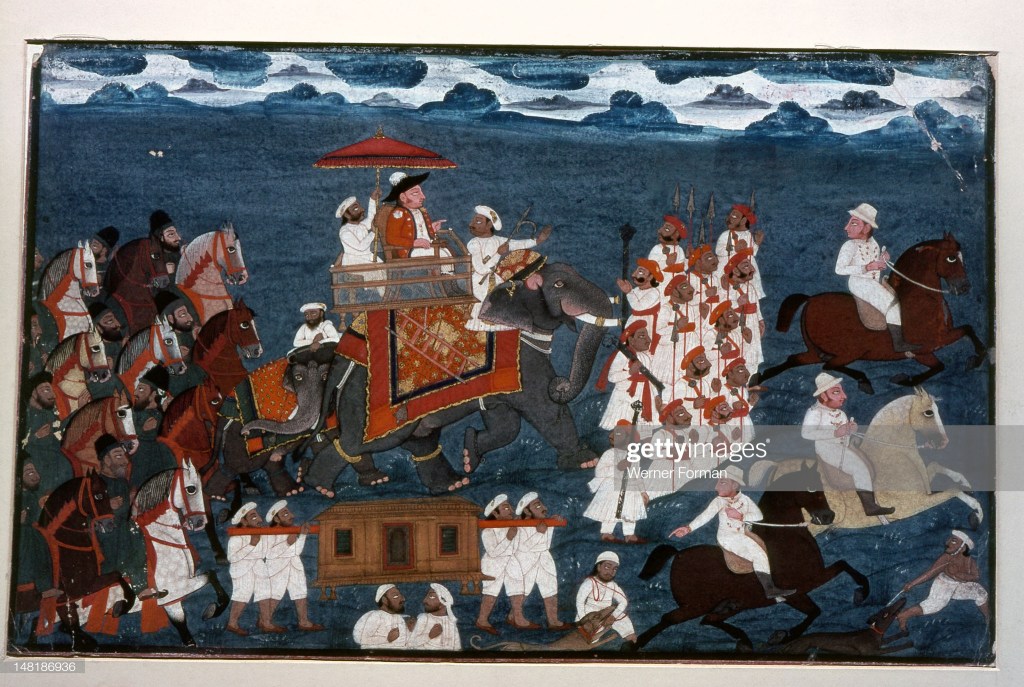This article is in
The Spectator’s inaugural US edition. Subscribe here to get yours.
A board of company directors is summoned to explain itself to a Whitehall Select Committee. The Bank of England has already had to bail out the company, the British economy has taken a hit in the fallout, and Parliament has now been recalled to discuss the company’s massive debts. In the committee room, the directors face allegations of embezzlement, bribe taking, and corruption, including the dispensing of ‘presents’ worth $262 million over an eight-year period.
The scene is depressingly familiar. Is this Lehman Brothers? Enron? Some of the stars of subprime? None of the above. The year is 1772 and the directors, in charge of what was then the world’s largest trading company, have just requested ‘one of history’s first mega-bailouts’. All part of the rise of the East India Company, the ‘world’s first aggressive multinational corporation,’ as told in William Dalrymple’s latest history.
In three of his previous books, Dalrymple brought us the gloriously detailed stories of Britons who fell for Indians or India; of the last King of Delhi in what the British call the Indian Mutiny and the Indians call the First War of Independence; and of the First Afghan War. The East India Company was a major player in each of those stories, but now Dalrymple has brought the Company center stage. And here there should be a warning: the spotlight reveals truths you might find very uncomfortable, which is exactly what revisionist history aims to do.
The company was incorporated in 1600, at the end of the Elizabethan golden age, when a group of traders, chancers, buccaneers, and a few more elevated characters led by the mayor of London, came together to challenge the Dutch monopoly on the eastern spice trade. They sent their ships to India, which at the time was divided into a number of independent sovereign states. During the 17th century, the Company vied with Dutch, French and even Danish traders for influence and market share. But it is the 18th century that this book charts so brilliantly, as the Company ruthlessly seduces, outwits or attacks one local ruler after another in what Dalrymple presents as a classic corporate raid.
Some of this story is familiar: Robert Clive leading the Company’s army to victory over the Nawab of Bengal and his French allies at Plassey in 1757; the rise and fall of the Mughal emperor Shah Alam II (1728-1806); the glories of the princely state of Avadh (Oudh) in northern India, whose court patronized some of the period’s great artists; and Hyder Ali and his son Tipu Sultan, the rulers of the southwestern kingdom of Mysore. In 1799, 200 years after the Company’s founding, Tipu’s death at the hands of the man who became the Duke of Wellington sealed the Company’s ascendancy across the subcontinent.
But alongside these familiar stories there are many brilliant surprises, not least the revelation that secret reports of the departure of a huge French force from a port in Brittany led the Company to militarize its base in Calcutta. Done in defiance of the Company’s agreement with the local ruler, this initiated a cycle of violence that engulfed the subcontinent for half a century and brought on the anarchy of Dalrymple’s title. (That French force, by the way, never appeared in India.) Another damning insight connects the personal fortune that Clive brought home as his reward for 14 years’ service, some $326 million in today’s money, to the cash shortage that prevented the Mughal empire from functioning.
The Company also did rather well, especially when subsequent cash shortages in India stimulated its export of Indian opium to China. By the end of the 18th century, its army was larger than Britain’s, its land empire was larger than the British empire and its revenue accounted for half of all British trade. Yet though it had great power, generated vast wealth, made a lot of people very rich and, from the late 1700s, was under some parliamentary oversight, the East India Company continued to act as a private company, which is to say, in the interests of its shareholders and with an eye to its profit line, and not in the interests of the millions of people it governed.Warren Hastings, one of the most capable and caring of the men sent out from London to administer India, described this situation as ‘bordering on inhumanity’.
Dalrymple’s prodigious talents are on full display in his ability to describe the big picture and give us convincing viewpoints from each of the very different players, to paint beautiful miniature portraits of key figures, to describe landscapes in such detail that they seem familiar even though we may never have been there and, above all, to make us care about things that happened two or three hundred years ago. He is evenhanded too, for while he condemns the Company’s administration for bringing on the anarchy and misery that overwhelmed princely India, he recognizes that some of the Company’s traders and administrators (his own relatives among them) acted in the way one would have wished the Company to have done.
Dalrymple quotes Leo Tolstoy writing to a young Mohandas Gandhi: ‘A commercial company enslaved a nation comprising two hundred million. Tell this to a man free from superstition and he will fail to grasp what these worlds mean.’ Equally incomprehensible is how many in Britain have looked on the Raj, the formal empire that succeeded the Company’s rule after the revolts of 1857, as a great national achievement. The Anarchy skewers that lie: the Raj was built on a ‘supreme act of corporate violence’, the sort of act that continues to wreak havoc in the world today.
This article is in The Spectator’s inaugural US edition. Subscribe here to get yours.




















